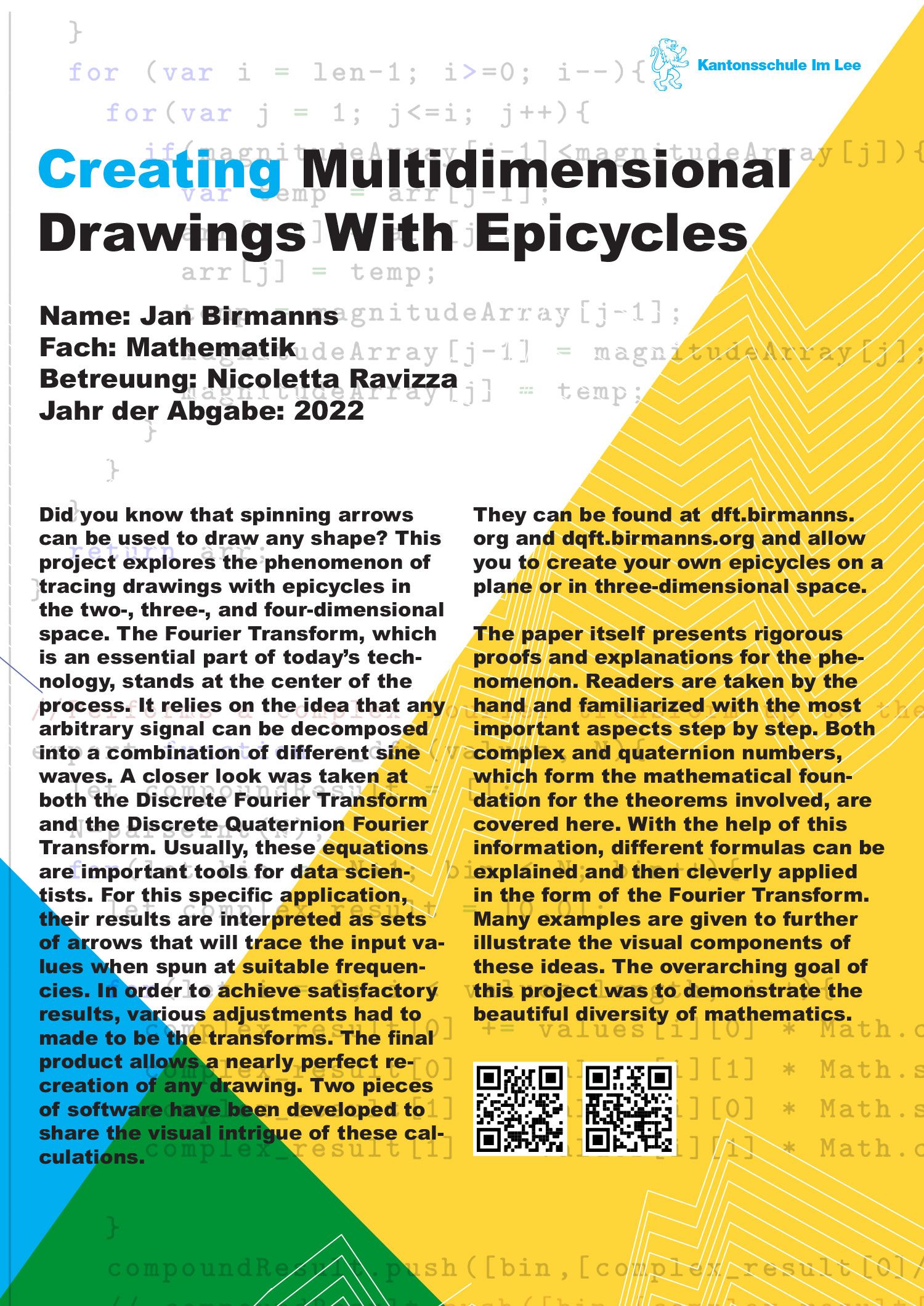2022
Autor/-in:
Birmanns Jan
Creating Multidimensional Drawings with Epicycles
Fach: Mathematik
Nicoletta Ravizza
Kantonsschule Im Lee
Fach: Mathematik
Abstract
Did you know that spinning arrows can be used to draw any shape? This project explores the phenomenon of tracing drawings with epicycles in the two-, three-, and four-dimensional space. The Fourier Transform, which is an essential part of today’s technology, stands at the center of the process. It relies on the idea that any arbitrary signal can be decomposed into a combination of different sine waves. A closer look was taken at both the Discrete Fourier Transform and the Discrete Quaternion Fourier Transform. Usually, these equations are important tools for data scientists. For this specific application, their results are interpreted as sets of arrows that will trace the input values when spun at suitable frequencies. In order to achieve satisfactory results, various adjustments had to made to the transforms. The final product allows a nearly perfect recreation of any drawing. Two pieces of software have been developed to share the visual intrigue of these calculations. They can be found at dft.birmanns.org and dqft.birmanns.org and allow you to create your own epicycles on a plane or in three-dimensional space. The paper itself presents rigorous proofs and explanations for the phenomenon. Readers are taken by the hand and familiarized with the most important aspects step by step. Both complex and quaternion numbers, which form the mathematical foundation for the theorems involved, are covered here. With the help of this information, different formulas can be explained and then cleverly applied in the form of the Fourier Transform. Many examples are given to further illustrate the visual components of these ideas. The overarching goal of this project was to demonstrate the beautiful diversity of mathematics.
